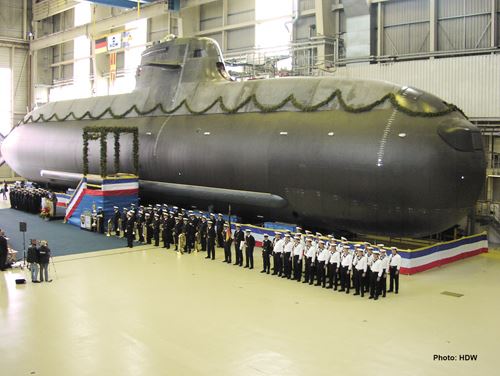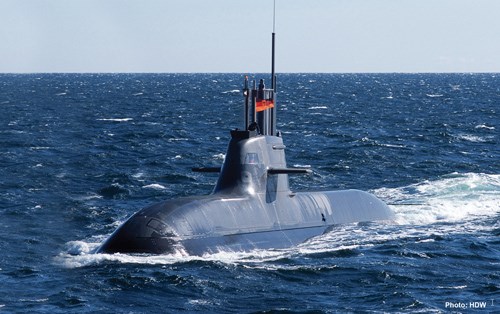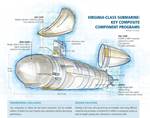Software enables submarine shipyard’s composites-for-metal effort
When Howaldtswerke-Deutsche Werft GmbH (Kiel, Germany) looked for a software solution to reduce the risk of using composites for a greater range of thicker parts, FiberSIM software from VISTAGY Inc. (Waltham, Mass.) enabled its engineers to develop initial designs more quickly and to better understand the impact of design changes.
Composite materials have slowly earned their way onto submarines for decades. For its part, Howaldtswerke-Deutsche Werft GmbH (HDW, Kiel, Germany) has increased composites usage on its vessels by 10 percent per year since 2008, thanks to FiberSIM software (VISTAGY Inc., Waltham, Mass.).
A submarine source since 1897, HDW is the leading builder of non-nuclear-powered submersible vessels and the only one to offer fuel-cell-powered submarines. Three years ago, the company set out to use more composites, targeting vessel weight reduction and improved hydrodynamic stability, stealth and sonar transmission. Cutting costs via parts consolidation was another big goal, says Marc Tillmanns, HDW’s lead composites engineer. But the worry was that large, thick parts would be difficult to produce and document accurately.
When HDW looked for a software solution to reduce the risk of using composites for a greater range of thicker parts, FiberSIM enabled its engineers to develop initial designs more quickly and to better understand the impact of design changes because design is better linked to manufacturing: “FiberSIM takes a lot of the worry out of the process by capturing the details of the final layups and verifying specifications with the software’s design verification tools,” says Tillmanns. Accurate flat patterns can be produced quickly, showing dart and splice placement, without trial and error, which previously wasted time and materials on the shop floor. Further, the software tracks the variety of materials that HDW uses and enables precise calculation of material weight and resulting inertial properties of the parts. The company also employs FiberSIM’s Laser Projection software to reduce layup errors and labor during part layup, using a projection system built by SL-Laser Systems LLC (Charlotte, N.C.).
With FiberSIM, HDW has added a variety of glass and carbon parts on its Class 214 submarines, including the complete upper deck, keel covers, tower sail fairings (cusps), propeller blades and rudders. More parts will follow, including a torpedo storage rack. “FiberSIM allows us to convert from metal to composite faster and minimizes the risk by verifying information before we get to the manufacturing floor,” says Tillmanns. “There’s no question that composites will grow in prominence for us, going forward.”
Related Content
-
Refurbished Einstein yacht demonstrates innovative composites repair and redesign
Years of creative engineering work went into resurrecting the composites-intensive IMOCA 60 racing yacht — with award-winning results.
-
Chantiers de l’Atlantique reveals 66-meter, all-composite SolidSail mast
A technological feat, the large carbon fiber mast prototype targets the Silenseas sailing liner and sailing cargo ships for up to 40% reduction in CO2 emissions.
-
Pro-Set named official materials supplier for New York Yacht Club American Magic
Competitive sailing team prepares for the 37th America’s Cup beginning in August 2024 with adhesives, resins and laminate testing services for its AC75 monohull construction.

















